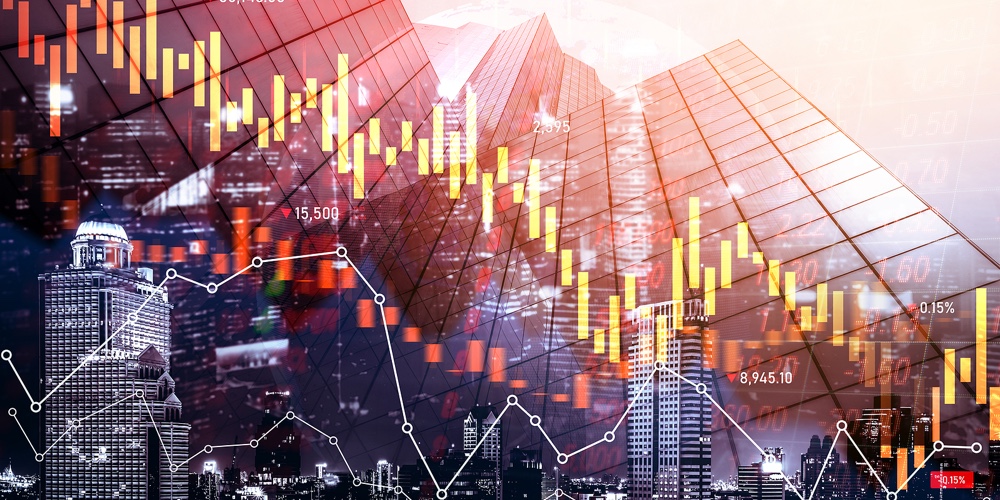Recession is looming. When will it hit and how severe will it be?

It is clear that the most significant economic story of the past year has been high inflation, which has not only affected current economic activity but has also shaped the outlook for the foreseeable future. Simply put, the future trajectory of the economy over the next year and a half will largely depend on the developments surrounding inflation.
If inflation starts to decline significantly, it will relieve the pressure on the Federal Reserve to continue raising interest rates at a rapid pace. On the other hand, if inflation remains persistently high, as it has for the past six months, the Fed will have to continue to use monetary policy to slow down the economy for a longer period.
How will these economic forces impact credit unions in the coming year?
2023 Economic Outlook Summary
- The economy is likely to continue experiencing modest growth until the second quarter of 2023.
- However, economic activity is expected to start slowing down in Q2, resulting in an increase in the unemployment rate.
- As long as inflation begins to decline as expected next year, the recession should be relatively short and mild compared to past recessions.
- By the end of 2023, both economic activity and employment should start to recover as market rates decline.
- The labor market is expected to return to full employment within a couple of quarters of the end of the recession. Despite this, the long-term effects of an aging population will likely keep the labor market tight in the United States for many years to come.
Are we headed toward a recession?
Most key financial conditions indicators including an inverted yield curve are strong indicators that there is a high likelihood of a recession occurring in the coming year, with the probability exceeding 95%.
The yield curve has been inverted since July 9 when the consumer price index was 9.1%, and it has remained inverted since then. It is worth noting that an inverted 10-year/1-year treasury yield curve has preceded every recession in the past 70 years, and there have been no instances of an inverted curve without a recession following in the same period.
When can we expect a recession to hit?
In my previous quarterly projections, I predicted that a recession could potentially start in Q4 of 2022 and was more likely to occur in the first and second quarters of 2023.
However, recent developments such as the continued strength of the labor market and relatively healthy (albeit deteriorating) consumer balance sheets have led me to revise my prediction. I now believe that the recession is more likely to occur in the second and third quarters of 2023.
Net Interest Margins
Interestingly, some credit unions have recently been able to increase their net interest margins, despite the inverted yield curve, by raising their lending rates faster than their deposit rates.
However, market forces will eventually catch up and compress these margins, leading to more cautious lending and a slower economy. This is one of the reasons why the inversion of the yield curve has been such a reliable predictor of recessions.
Since credit unions typically borrow in the short term and lend out in the long term, when long-term interest rates are lower than short-term rates, net interest margins are squeezed, causing a decrease in lending. This reduction in credit availability, or tightening of financial conditions, can cause a predicted recession to become a reality. In fact, the most recent Federal Reserve senior loan officer survey shows credit standards have tightened on nearly every form of borrowing, commercial and consumer.
Consumer Balance Sheets
As inflation continues to outpace wage growth, consumer savings are deteriorating. Not only are consumers saving less, but they are also increasing their debt in order to maintain their spending levels. This is reflected in the significant increases in credit card debt and home equity borrowing seen last year.
Furthermore, the savings accumulated by households during the various pandemic stimulus rounds are now all but spent. In fact, excess savings fell by half last year. However, with over a trillion dollars still available, consumers may be able to maintain their current levels of spending for longer than initially expected, likely into the second quarter.
While the use of savings and increased borrowing by consumers may temporarily delay the onset of the recession, it will not prevent it. Ultimately, there is a limit to how much consumers can afford to do these things before spending starts to slow down.
How long is the projected recession likely to last and how bad will it be?
The majority of economists are predicting the looming recession will be shorter and shallower than average downturns.
While this is the current expectation given the strength of the labor market and relative health of the financial system, there is an increasing chance of a harsher economic decline. If inflation remains high and the Federal Reserve continues to aggressively raise interest rates and keep them elevated, the likelihood of a longer and deeper recession increases.
Looking ahead to 2023, inflation—as measured by the consumer price index—is expected to be between 2.5-3.5%. However, given the recent trend of higher-than-expected inflation readings, it is more likely that inflation will remain above 4% by the end of 2023 and return to the Fed’s target of 2% in 2024.
Unemployment is expected to peak at 5.5-6% next year, which is lower than the typical 7-10% seen during most recessions. This should help limit negative feedback loops that can drive the economy down in a recession. However, the risks to this outlook are currently to the downside due to the economic outlook and the persistence of high inflation.
As we brace for continued tough economic times, it’s more important than ever for financial institutions to arm themselves with information about weathering the turbulence ahead.
Join us on January 18 at 10:30 a.m. for our 3rd Annual Economic Review and Forecast for Financial Institutions webinar. Our team of experts will examine what’s been motivating the economy for the last year and where we’re headed in 2023. Click here to register!

